Step-by-Step Guide On How To Build a Web Scraper with ProxyJet
What is a Web Scraper?
A web scraper is a software tool that automates the process of extracting data from websites. It systematically browses web pages, collects the desired information, and saves it for analysis or other uses. Web scrapers are commonly used for market research, price comparison, data mining, and competitive analysis. Integrating ProxyJet proxies into your web scraper helps to avoid IP bans and manage multiple sessions efficiently.
Use Case for ProxyJet Integration
By integrating ProxyJet proxies, you can use high-quality residential and ISP proxies, ensuring anonymity, bypassing IP-based rate limits, and accessing geo-restricted content. This setup is particularly useful for large-scale data extraction and ensuring uninterrupted scraping operations.
Generating Proxy in ProxyJet Dashboard
- Sign Up: Go to ProxyJet and click on "Sign Up" or "Sign Up with Google".
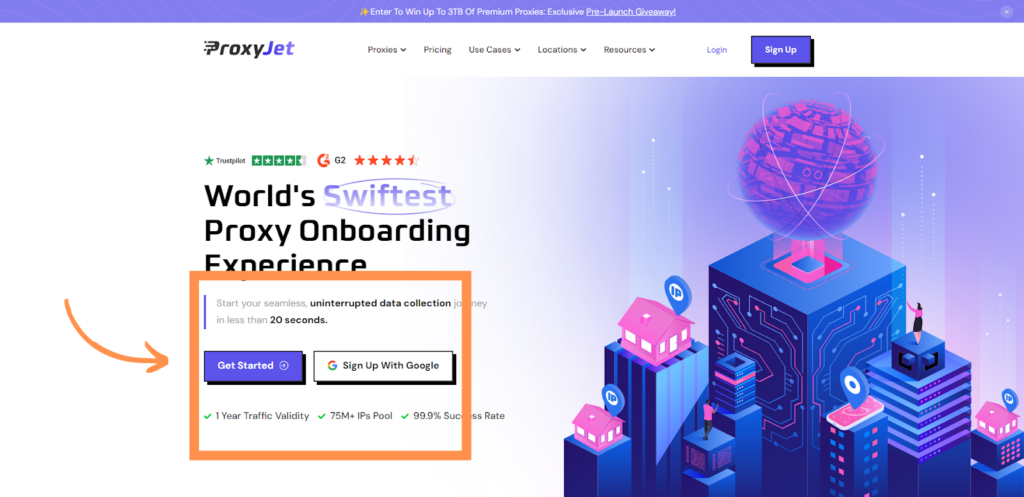
2. Create Account: If you don't use Google sign-up, please make sure you verify your email.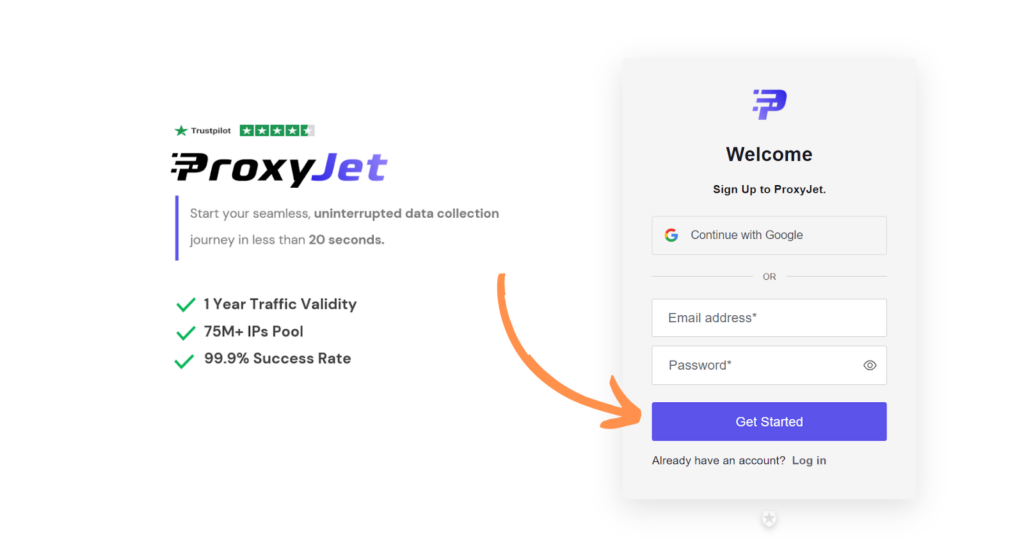
3. Complete Profile: Fill in your profile details.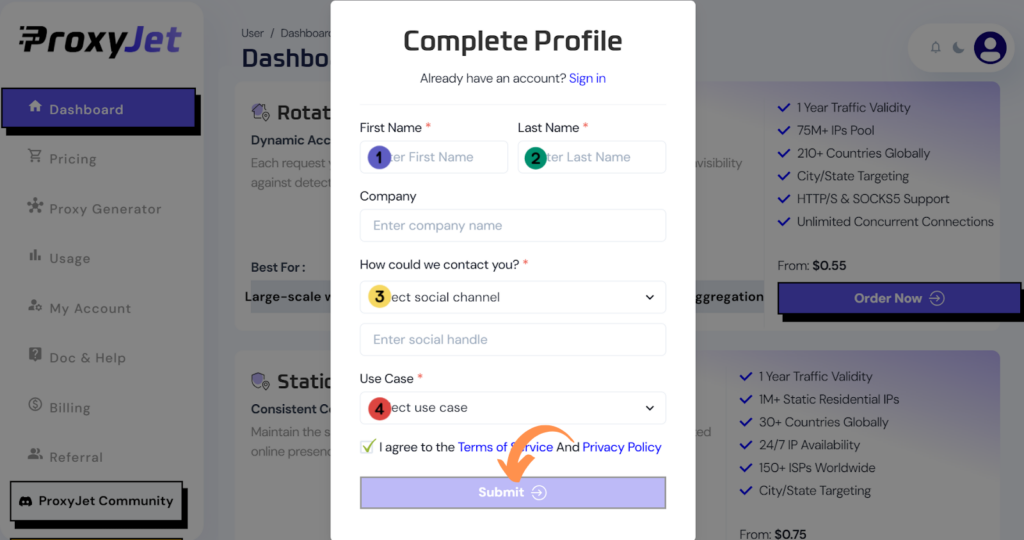
4. Pick a Proxy Type: Choose the type of proxy you need and click "Order Now".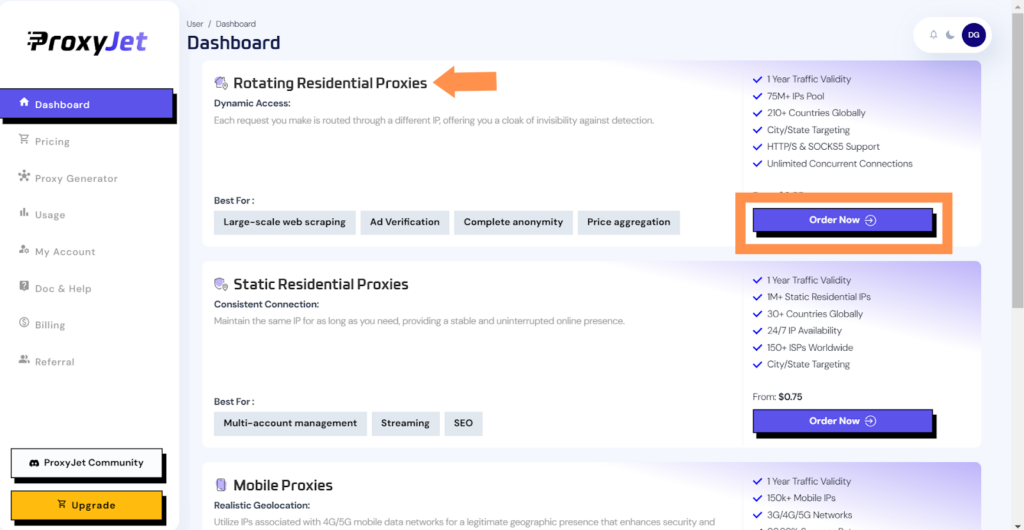
5. Pick Your Bandwidth: Select the bandwidth you need and click "Buy".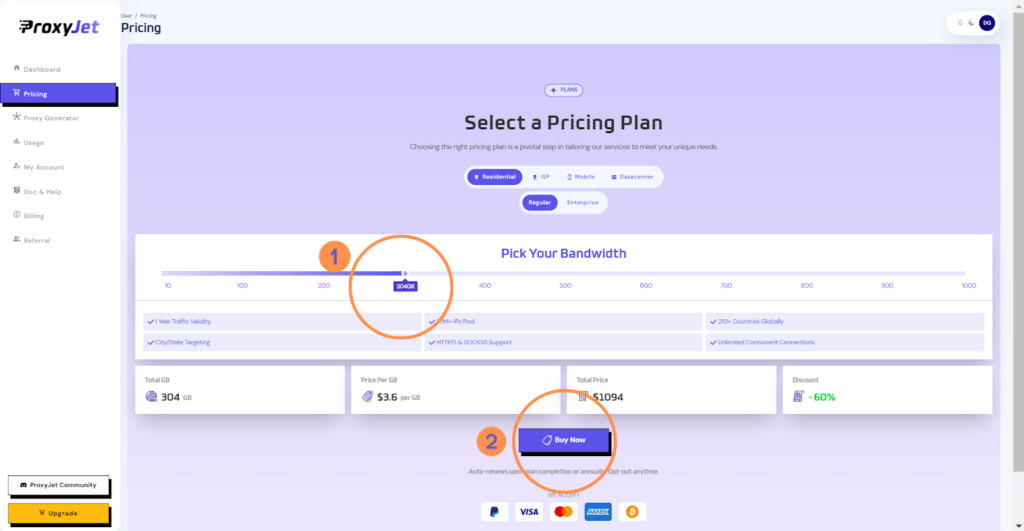
6. Complete the Payment: Proceed with the payment process.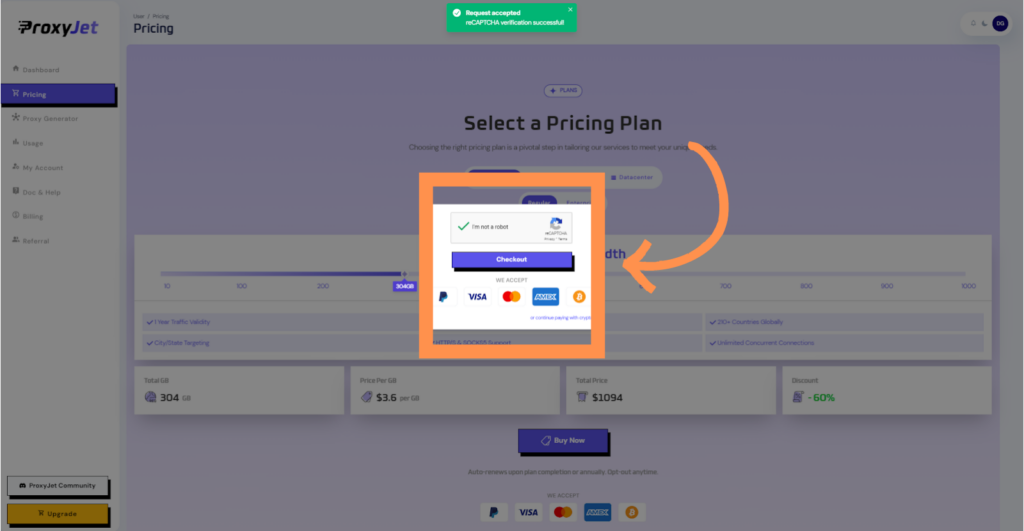
7. Access the Dashboard: After payment, you will be redirected to the main dashboard where you will see your active plan. Click on "Proxy Generator".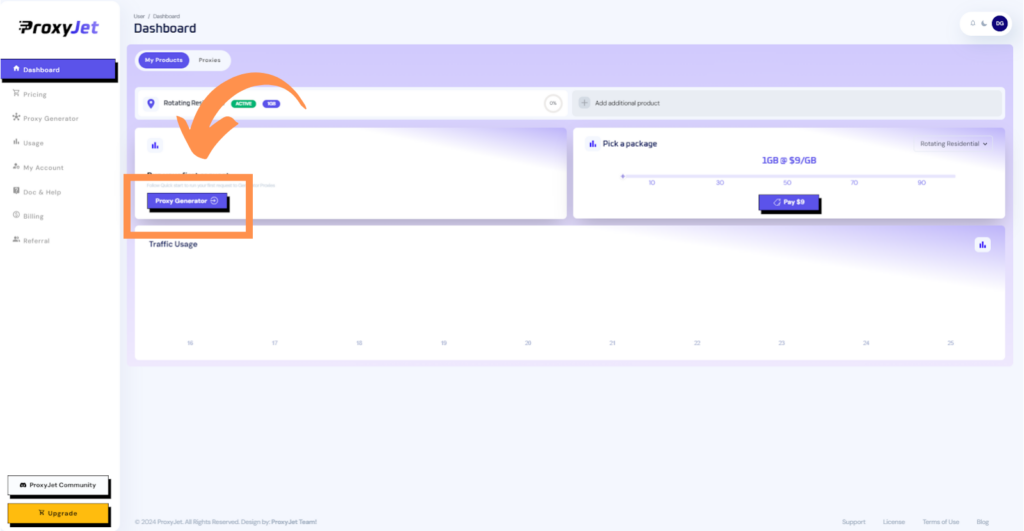
8. Switch Proxy Format: Click the toggle on the right top side of the screen that switches the proxy format to Username:Password@IP:Port.
9. Generate Proxy String: Select the proxy properties you need and click on the "+" button to generate the proxy string. You will get a string that looks something like this:
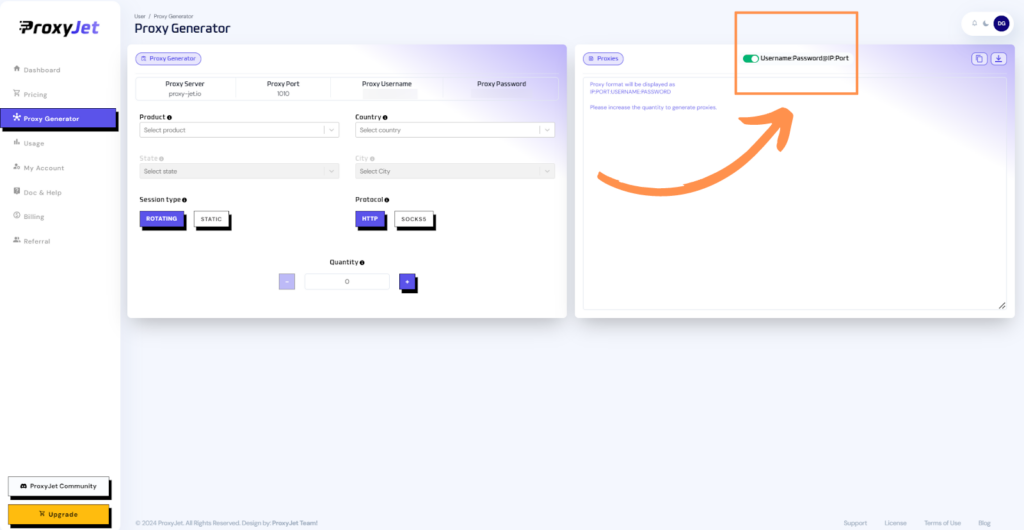
10. Great Job!: You have successfully generated your proxy!
Building Your Web Scraper
Step 1: Choose a Web Scraping Library
Depending on the programming language you're using, choose a suitable web scraping library. Popular choices include:
- Python: Beautiful Soup, Scrapy, Requests
- JavaScript: Puppeteer, Axios
- Java: JSoup
- C#: HtmlAgilityPack
Step 2: Install the Library
Install the chosen library using the package manager for your programming language. For example, using Python:
Step 3: Write the Web Scraper Code
Create a basic web scraper script. Here is an example using Python with the Requests and Beautiful Soup libraries: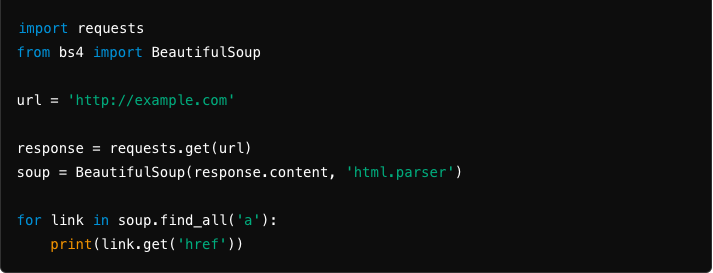
Step 4: Integrate Proxies into Your Scraper
Add the proxy configuration to your web scraping code. Here is an example using Python with the Requests library:
import requests
proxies = {
'http': 'http://A1B2C3D4E5-resi_region-US_Arizona_Phoenix:F6G7H8I9J0@proxy-jet.io:1010',
'https': 'http://A1B2C3D4E5-resi_region-US_Arizona_Phoenix:F6G7H8I9J0@proxy-jet.io:1010'
}
response = requests.get('http://example.com', proxies=proxies)
print(response.content)
Step 5: Implement Proxy Rotation
To avoid IP blocking, implement proxy rotation in your web scraper. Here is an example using Python:
import requests
from itertools import cycle
proxies = [
'http://A1B2C3D4E5-resi_region-US_Arizona_Phoenix:F6G7H8I9J0@proxy-jet.io:1010',
'http://A1B2C3D4E5-resi_region-US_NewYork:F6G7H8I9J0@proxy-jet.io:1010'
]
proxy_pool = cycle(proxies)
for _ in range(10): # Example loop for 10 requests
proxy = next(proxy_pool)
response = requests.get('http://example.com', proxies={'http': proxy, 'https': proxy})
print(response.status_code)
Step 6: Handle Dynamic Content with a Headless Browser
For scraping dynamic content, use a headless browser like Puppeteer: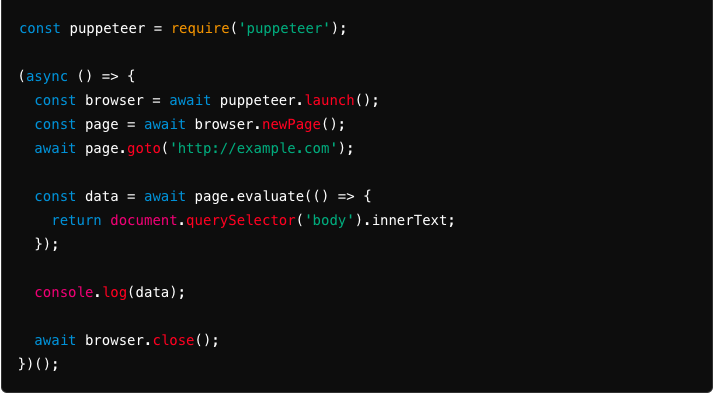
Conclusion
By following these steps, you can build an efficient web scraper integrated with ProxyJet proxies to enhance anonymity, avoid IP blocks, and manage multiple scraping sessions effectively. This setup ensures that your data extraction tasks remain secure and efficient, leveraging the capabilities of ProxyJet proxies.
Related Articles
Step-by-Step Guide for Integrating ProxyJet Proxies in Parsehub
What is Parsehub? Parsehub is a user-friendly web scraping tool that allows users to extract data from websites into structured formats like spreadsheets or APIs. It simplifies the process of gathering information from web pages by providing a visual ...Step-by-Step Guide for Integrating ProxyJet Proxies in Multilogin
What is Multilogin? Multilogin is an advanced browser management tool designed to help users manage multiple online identities and accounts securely. It allows the creation of distinct browser profiles, each with unique cookies, browser fingerprints, ...Step-by-Step Guide for Integrating ProxyJet Proxies in Webscraper.io
What is Webscraper.io? Webscraper.io is a powerful web scraping tool that offers a browser extension and a cloud service to automate data extraction from websites. It simplifies the process of web scraping with a visual interface and allows users to ...Step-by-Step Guide for Integrating ProxyJet Proxies in Safari
What is Safari? Safari is Apple's web browser, known for its speed, efficiency, and strong privacy features. Optimized for macOS and iOS devices, Safari offers a seamless browsing experience with advanced privacy protections like Intelligent Tracking ...Step-by-Step Guide for Integrating ProxyJet Proxies in Firefox
What is Firefox? Firefox is a widely-used web browser that prioritizes privacy, security, and customization. It supports a variety of extensions and configurations, making it an excellent choice for users who want to tailor their browsing experience. ...